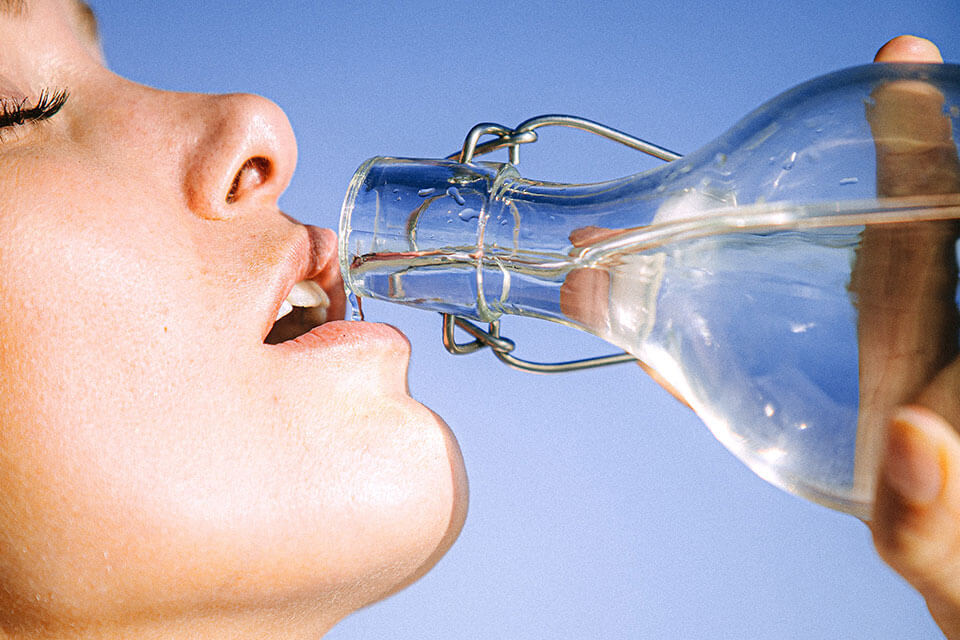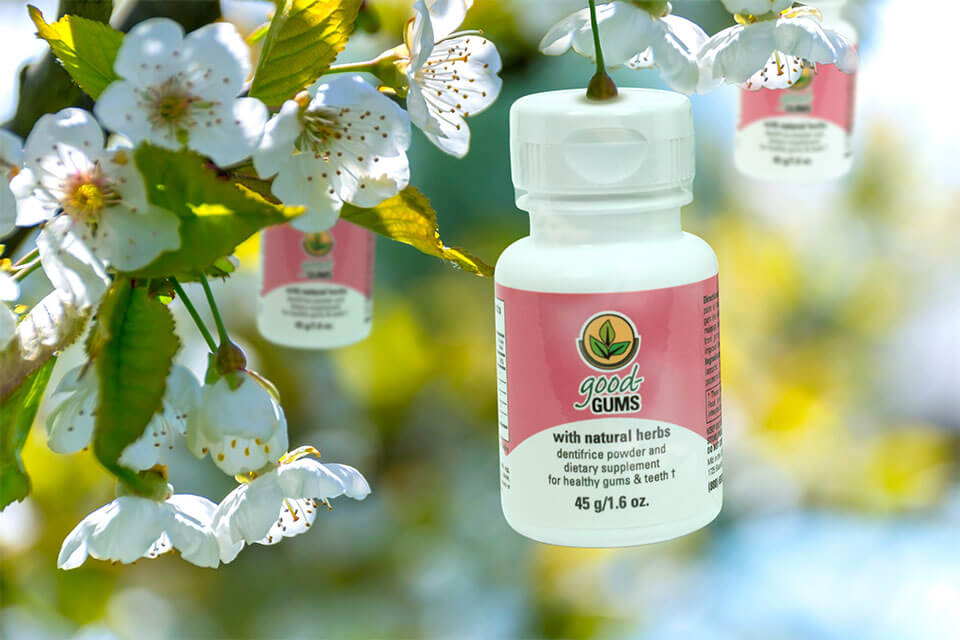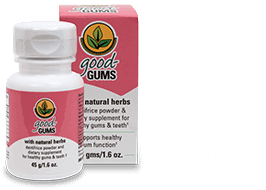Good-Gums is obsessively focused on supporting the health of your gums and teeth, and our ingredients support this goal. No flavorings, no colorings, and no teeth whitening agents. However, that doesn’t mean that you can’t whiten your teeth while using Good-Gums.
But first consider whether taking an extra step to whiten teeth is even necessary. For some people it’s not, depending on their genetic inheritance and lifestyle habits (e.g. what they eat and drink). Some users have reported that Good-Gums has made their teeth whiter, even removing some stubborn stains.
On the other hand, not everyone’s teeth are exactly the same or respond the same way to the things that can reduce the whiteness of teeth. So a number of people will still want to whiten their teeth beyond what’s possible without whitening measures. But they don’t want to forego the improvements to their gum health from Good-Gums. No one has to.
But before we look into possible measures to whiten teeth, it might be worthwhile to look at the teeth themselves. The parts of the teeth that most affect their whiteness are the enamel and the dentin. By far the enamel has the most influence. The whiteness is affected by factors that are either mostly internal to the teeth (intrinsic staining) or by factors mostly external to the teeth (extrinsic staining). Sometimes by both. Knowing the factors involved guide us on what to do to improve whiteness.

FACTORS AFFECTING THE WHITENESS OF TEETH
Internal factors include:
- The degree of translucence of the enamel (the degree between completely transparent and completely opaque). The more opaque the enamel, the whiter the teeth appear. The less opaque, the more the color of the underlying dentin shows through.
- The orientation of the microscopic enamel structure, particularly of the crystals in the enamel rods (microscopic structures in enamel). This affects both reflectivity and translucence.
- The natural color of your dentin (which varies among individuals from light gray to pale yellow to yellow, and which becomes increasingly yellow with age).
- The thickness of the enamel. The thicker the enamel, the more opaque and less translucent the enamel appears. And the thicker the enamel, the fewer the microscopic pathways leading all the way to the underlying dentin. Decades of wear (both mechanical and chemical) typically reduce the thickness.
- The smoothness of the enamel surface, affecting how much light is reflected off the surface.
- The porosity of the enamel, affecting how much a staining agent can penetrate into the tooth.
- The prevalence of micro-fractures and demineralization in enamel, which provides additional pathways for staining agents to penetrate the tooth.
- How much or how little saliva your body produces.
And some less common intrinsic factors could be:
- Whether a blood vessel or nerve in the tooth root has been injured (e.g., internal bleeding).
- Whether you had too much exposure to fluoride as a young child when your teeth were developing.
- Whether you had too much exposure to tetracycline (or certain other drugs) in the womb or as a very young child.
External factors include:
- The color of substances coming into contact with the teeth, particularly of substances with staining properties. Notoriously staining substances include: Tobacco, Coffee, Tea, Red wine, Dark berries, Beets, Balsamic vinegar, Curry.
- Some people are also susceptible to substances that have weaker staining properties, such as the colors of some vegetables, the herbs in spices, or even the herbs in Good-Gums. Your experience will be your guide.
- How briefly or how long you allow naturally-occurring and pellicle to remain on your teeth after having been stained. Before or after it transfers to the enamel underneath.
- How briefly or how long you allow stains to remain on the enamel itself, affecting the degree of penetration into the enamel’s pores.
- The amount of your teeth’s exposure to foods that are acidic enough to cause microscopic etching. This affects the smoothness (and therefore reflectivity) of the enamel.
- The presence of plaque and calculus (also known as tartar, which is plaque that has become mineralized and hard as stone). Generally these are darker than your enamel.
- The existence of cavities (tooth caries), which normally appear dark.
- How well you stay hydrated, affecting the amount of saliva your body produces.
- Exposure to medical treatments that lower saliva production, typically from radiation.

preserving or improving the whiteness of your teeth
Preserve the thickness of your enamel by reducing its erosion, both chemically and mechanically...
Avoid especially acidic foods and drink, or at least rinse your teeth shortly after exposure.
Avoid abrasives. Toothpaste removes plaque by the use of abrasives; some brands are highly abrasive. Charcoal and clay are considered highly abrasive. A better alternative than grinding off plaque with abrasives is to loosen the grip of plaque bacteria (Good-Gums contains an herb that does this) so that even a toothbrush without abrasives effectively removes the plaque.
If you have acid reflux, try to avoid stomach acid from reaching your teeth during sleep. If the acid reflux is due to a hiatal hernia, make your last meal of the day a small one and stop eating hours before you go to bed.
Preserve the thickness of your enamel by allowing natural remineralization of your enamel...
After acids (from food or digestive fluids) leach away crystals of apatite (the mineral comprising your enamel), your body uses the natural process of saliva remineralization to restore the missing molecules and to repair the mineral crystals of your enamel. This works only if your enamel comes into direct contact with your saliva, which contains the ions of the very minerals that make up the apatite crystals. Particularly before going to bed at night, don’t apply products with glycerin to your teeth, which seals them off from contact with saliva. Don’t use toothpaste or mouthwash with glycerin. (Good-Gums contains no glycerin.)
Keep the surface of your enamel smooth…
Get your teeth polished by dental hygienist regularly. (Not too often. Polishing smooths the enamel, but removes a tiny bit of enamel in the process.)
Deal with stains without delay. Besides being darker than your enamel, stains provide a microscopic roughness that provides a good “foothold” for plaque forming bacteria.
Stay hydrated…
Important so you’ll produce the ideal amount of saliva that your body is capable of. Saliva helps flush away the acids of food and digestive fluids away from the teeth.

Avoid smoking…
Smoke contains tar and nicotine that penetrate into the enamel’s pores and is very staining.
Avoid foods or drinks that stain, or at least rinse your teeth immediately after exposure…
Tea, coffee, chocolate, red wine, curry and similar are all culprits!
Remove pellicle that gets stained, before the stains transfer to the enamel…
Brush with just plain water after meals. But this time, instead of focusing under the gum collar, focus on the exposed enamel.
Brush to reduce stains already on the enamel…
Don’t let them remain long enough to penetrate deeply through pores in the enamel, through channels of demineralized enamel rods or through micro-cracks in the enamel.
You don’t want staining substances to reach the dentin, which holds stains much more readily. Dentin is not a solid material with only relatively few pores (as enamel is), but rather is made up of microscopic tubules with open ends facing the center of the tooth’s root canal at one end and facing the enamel at the other. The open ends of the tubules can readily catch and hold liquids with dissolved staining-color in them, and this can show through the translucent enamel, making the teeth appear darker.
Adapt your brushing technique when polishing enamel; it’s different than when focusing on the gums. Instead of nestling bristles under the collar of the gums and wiggling the brush head, slide the bristles across your enamel to polish away the staining substances.

Three dentifrices that can increase effectiveness of whitening
Baking soda alone… hardly abrasive at all.
Salt and baking soda … still much less abrasive than toothpaste. (I personally use 60% salt and 40% baking soda. – John)
A slurry of salt and baking soda and about 10 – 12 drops (about 3/4 of a ml) of 4% food-grade hydrogen peroxide. Note that food-grade hydrogen peroxide is usually sold in concentrations stronger than 4%, and so has to be carefully diluted with distilled water.
If you want to get the fastest results for gum improvement, but also want to increase the whiteness of your teeth, then consider brushing to remove stains after using Good-Gums every morning, but at night leaving the residue of Good-Gums in your mouth without even rinsing, for a little more absorption by your gums while you sleep. If you have teeth that stain very easily, then consider brushing to remove stains both morning and night.
Some precautions
Avoid wearing away exposed dentin. If your gums have receded to the point of exposing the dentin that used to be below the gum line, be aware that dentin is not as durable as enamel. The same amount of abrasives or scrubbing will wear away dentin faster than enamel, so be cautious.
Note: While oil pulling has been shown to be effective at reducing bacteria, it has mixed results in making teeth whiter. Perhaps it works better on oil-soluble stains.

Using Good-Gums for your gums while protecting and whitening your teeth
So many people report becoming enthused by how Good-Gums has helped the health of their gums. A key reason is the formula’s inclusion of vitamin C, which the body needs plenty of when growing new healthy connective tissue. (Gums are almost entirely comprised of connective tissue.)
Yet, vitamin C is acidic, and as noted above, exposing enamel to acids can be detrimental. How to get around this? The Good-Gums formula also includes an even larger amount of baking soda (which is an alkaline), so that the entire formula of Good-Gums is actually alkaline instead of acidic.
But then, if there are both acidic and alkaline ingredients, shouldn’t they just react with each other in the bottle, making the vitamin C so weak as to lose its effectiveness? Ah, but that’s why the formula is made as a dry powder, preventing the two from reacting until the introduction of moisture, which would get the chemical reactions going. Our formula has been tested to retain the strength of the vitamin C for over 3 years, even though the formula is basically alkaline. When the Good-Gums powder is exposed to saliva, the reaction between the two could start at that point, but the gums are so absorbent that they absorb the vitamin C before it has a chance to be neutralized by the baking soda. Your gums get the vitamin C they need; your teeth don’t get exposure to an acidic formula.
NOTE: We’d like to gauge whether there’s enough interest in having us provide already-blended mixtures of salt and baking soda, along with dropper-bottles of 4% hydrogen peroxide. We don’t produce this product now, but if you want us to start, please let us know by clicking on this link and scrolling down on the right hand side to “Send us a message.”
We hope this information is helpful in your achieving both healthy gums and teeth that are healthy and white.
The guys at Good-Gums.



